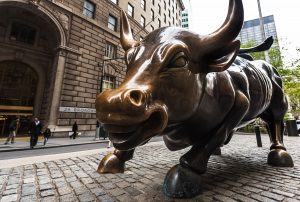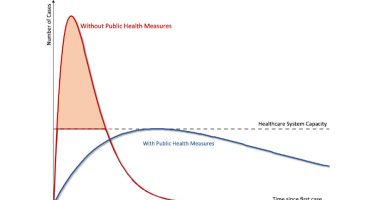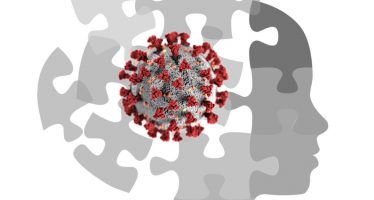Hold the Bulls: US Recovery Marred by Uncertainty
 In early June, the Business Cycle Dating Committee of the National Bureau of Economic Research formally declared a recession – the first since 2009. The US economy reached its apex in February and all but imploded in the weeks and months that followed, bringing the longest expansion on record to an end. However, just after the committee announced its verdict, early signs of a quick turnaround emboldened investors already primed for a comeback. On 9th June, the S&P 500 swung back to black and recouped all of the losses accumulated during the first three weeks of March with a strong and sustained rally that saw the index rise by 44 percent in little more than two months.
In early June, the Business Cycle Dating Committee of the National Bureau of Economic Research formally declared a recession – the first since 2009. The US economy reached its apex in February and all but imploded in the weeks and months that followed, bringing the longest expansion on record to an end. However, just after the committee announced its verdict, early signs of a quick turnaround emboldened investors already primed for a comeback. On 9th June, the S&P 500 swung back to black and recouped all of the losses accumulated during the first three weeks of March with a strong and sustained rally that saw the index rise by 44 percent in little more than two months.
The US market seems to downplay the effect of the corona pandemic on businesses and consumers, trusting the Federal Reserve to tackle the recession with a ‘shock and awe’ display of its firepower. Fed Chair Jerome H Powell left little room for doubt when he declared that the wherewithal of the system of central banks is, essentially, without limit. That was Powell’s ‘whatever-it-takes’ moment and it did the trick: investor confidence promptly soared.
In June, most news was upbeat: oil prices briefly peeked north of the $40 mark and the haemorrhaging of jobs was stopped after around 40 million workers had filed for unemployment benefits. Even severely castigated airline stocks regained their lost lustre. Boeing, too, staged a modest rebound as investors took heart from a significant uptick in domestic business and leisure travel.
In the second week of June, the Transport Security Administration reported that almost half a million travellers pass its airport checkpoints each day, just 17 percent of the normal volume for the time of the year, but up from the 14th April low of 90,000 (4%). Shares of American Airlines gained an astonishing 90 percent over a ten-day period whilst United Airlines (+70%) and Delta Air Lines (+45%) also joined the unexpected fray. Most carriers resuscitated their hastily slimmed down networks and plan to add extra flights to domestic holiday destinations in Florida, Montana, and Wyoming. Resorts in and around the Glacier National Park in Montana report strong bookings for July and August and expected occupancy rates bordering 80 percent.
As markets shrugged off concerns, pundits were left puzzled, if not confused. Instead of further job losses, the Bureau of Labour Statistics surprised all and sundry with the news that 2.5 million people went back to work in May. Sounding a cautionary note, analysts warned that the upswing merely expressed the heightened volatility of the market which may easily be spooked back into bear country. They also fear that a second coming of the coronavirus may stop any recovery dead in its tracks.
Unspoken, but still a major behavioural driver, is the conviction amongst investors that President Donald Trump may yet pull a trick or two to secure his re-election. The markets have largely dismissed his more outrageous statements, comments, and tweets, concentrating instead on the actual policy initiatives and actions of the Fed. The encouraging news on the economy is considered a sign that, quite possibly, the damage wrought by the pandemic may not have been as devastating as expected. The hope of a V-shaped recession has been rekindled.
There now exists broad agreement that the unprecedented stimulus package has managed to avoid, or significantly lessen, a sharp drop in consumer spending. The US federal government has so far injected well over $3 trillion into the economy and is considering a supplementary plan to keep the nation on life support. However, the good news has strengthened Republican lawmakers in their conviction that it is too early, and perhaps even unnecessary, to expand the existing support package.
Businesses in the food and beverage sector created more than half of the 2.5 million jobs added in May with about three-quarters of the establishments receiving federal aid under the Paycheck Protection Program. Last months, the healthcare industry hired an estimated 250,000 workers.
The remarkable rebound is being ascribed to the different aid programmes kicking in, after a slow start in April when the agencies and main street banks charged with the disbursement of federal monies were overwhelmed by the sudden surge in demand. With the backlog cleared, money is flowing smoothly to the intended recipients.
Trump Administration officials and Republican representatives and senators were quick to declare victory and mission accomplished. However, House Speaker Nancy Pelosi (D-CA) rained on the Republicans’ parade by reminding that the pandemic has claimed well over 100,000 deaths and left some 25 million Americans without a job: “The May numbers show that decisive action by Congress can and does make a big difference. Now is not the time to take the foot off the gas.”
Pelosi does have a point: real-time data from various sources fail to show a correlation between the relaxation of lockdown measures and a pickup in business activity. States that moved early to lift stay-in-place orders such as Texas and Georgia registered no more job gains than those that kept restrictions largely in place. Moreover, the finances of state and local authorities have taken a severe hit which caused over half a million civil servants to lose their jobs. Education was particularly hard-hit with over 310,000 teachers and support personnel being shed from the payroll. Meanwhile, local tax revenue has evaporated, forcing deep and painful budget cuts unless the federal government steps in with support.
Trump held out some hope when he mentioned that his administration is ready to do more ‘if we want’. The president is said to favour indirect forms of aid such as tax cuts for businesses and investors. Republicans, and some Democrats too, seem increasingly worried about rising debt levels and plead for a more measured response to the economic malaise. They cling to the notion, made fashionable by President Reagan and Prime Minister Thatcher in the 1980s, that governments’ only sources of cash are taxes or borrowing.
This apparently reasonable logic is still in vogue and led to the ‘deficit myth’ which has become a staple of US conservatives and European liberals alike. It holds that deficit are per definition wrong and draw on the earnings of future generations. Though the myth invites great one-liners and soundbites, it entirely ignores the monetary power of governments that issue their own currency. As Powell noted there is no limit to this power other than inflation and the availability of labour and material resources.
In the face of the trillions in ‘new money’ being created and spent by the US federal government, the deficit myth and austerity, its direct descendant, serve no purpose – if they ever did. Modern Monetary Theory (MMT) helps explain that only actual limits matter whilst the balance remaining at the end of the fiscal year does not. Rather than some exotic or esoteric fringe theory, MMT merely describes the actual role of money and does so without the inclusion of moral values or considerations. As such, MMT shows a way out of the Corona recession and offers solutions that may ease the economic and social pain.
However, politicians and even some of the more traditional economists have trouble understanding the concept of money and explaining its actual working to voters or readers. This may cut short the major interventions that have weaved the safety nets currently supporting the world’s major economies. Powell cautioned against too much optimism and offered a grim assessment at the close of the central bank’s June policy meeting: “This is the biggest economic shock in the US and the world, really, in living memory. We went from the lowest level of unemployment in 50 years to the highest level in close to 90 years, and we did it in two months.”
Powell promised that the Fed will do ‘whatever we can, for as long as it takes’ to support the economy and said that he and his colleagues cannot envision an increase in borrowing costs for this year or the next: “We are not even thinking about raising rates.” The Fed chairman said that May’s encouraging job report merely underlines the present uncertainty and the inability to make accurate predictions.
You may have an interest in also reading…
Interest Rate Hike Key to Turkey’s Economic Fortune
Amidst the cacophony produced by Messrs Trump and Jinping, the drumbeat of a small war was almost drowned out. Last
Otaviano Canuto: More Than One Coronavirus Curve to Manage – Infection, Recession and External Finance
Flattening Coronavirus Curves – Otaviano Canuto First appeared at the Policy Center for the New South The global reach of
Employers Need to ‘Catch Up’ with Looming Covid Mental Health Crisis
When it comes to workplace wellbeing, there has been a polarised response to the pandemic. A third of UK employees



















































































